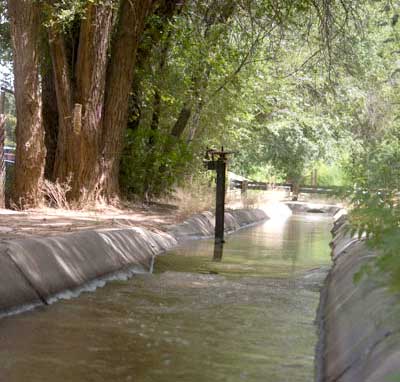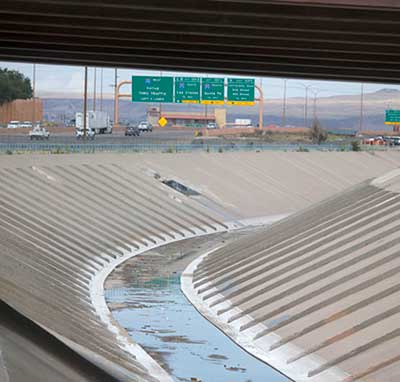Although arroyos and ditches can appear harmless, it’s important to remember that a flash flood, New Mexico’s number one natural disaster, can occur at any moment. Here’s what you need to know about ditches and arroyos.

Irrigation Ditches
- Earth or concrete lined waterways which provide irrigation water to properties within the benefitted boundaries.
- They are usually filled with water from March 1st to October 31st of every year.
- The water temperature during the spring filling of these ditches is cold enough to cause a person to drown due to shock and or hypothermia.
- The water in ditches can move fast enough to sweep a person downstream with little chance of getting out safely.
- Some ditches have undertows. If you’re caught in one of these you can be pulled underwater and your chances of getting out are very slim.
- Many ditches contain debris such as rocks, glass and barbed wire.
- There are sometimes dead animals in the ditches.
- Bridges over the ditch can be slippery or possibly unstable.
- The banks of ditches are very slippery—if someone falls in, they can’t easily get out!
- The age range of drowning victims is 2 years to 87 years old.

Arroyos
- Arroyos are cement or dirt-lined waterways that run east to west or west to east.
- Their purpose is to move flood water from the mountains or mesas to the Rio Grande River as quickly as possible
- 99% of the time they are dry, so it is tempting to walk, jog, skateboard, or rollerblade in them.
- They fill with water when it rains. It may be sunny in Albuquerque, but raining in the mountains. Water comes down so fast that it’s called “flash flooding.” Within 10 seconds you could get caught in water going up to 40 miles per hour . It is nearly impossible to get out!
